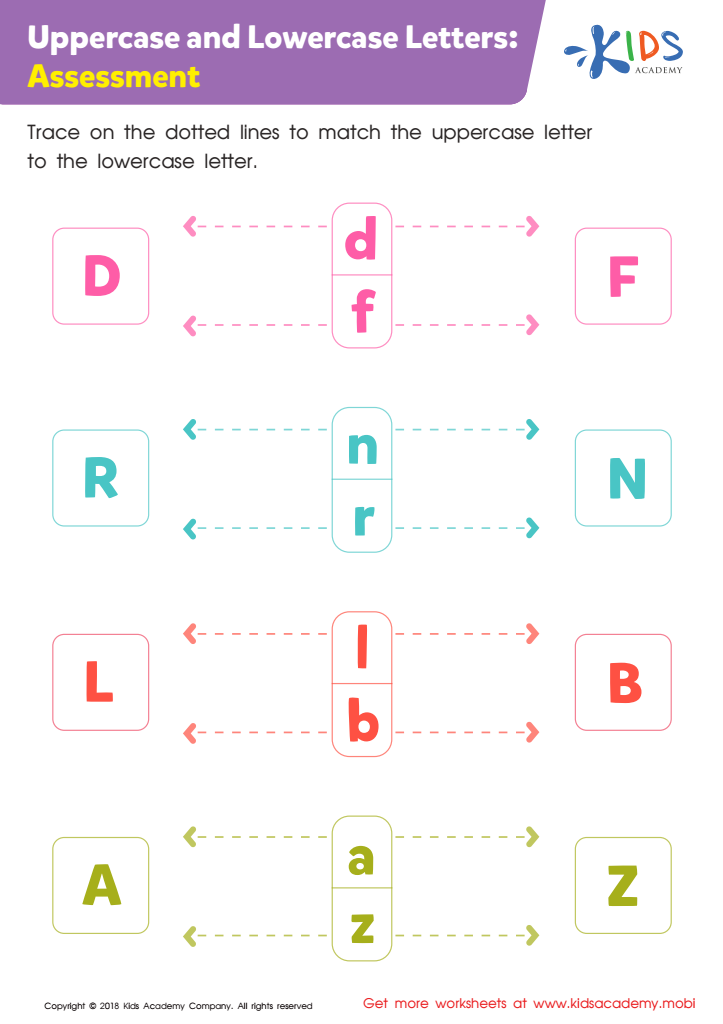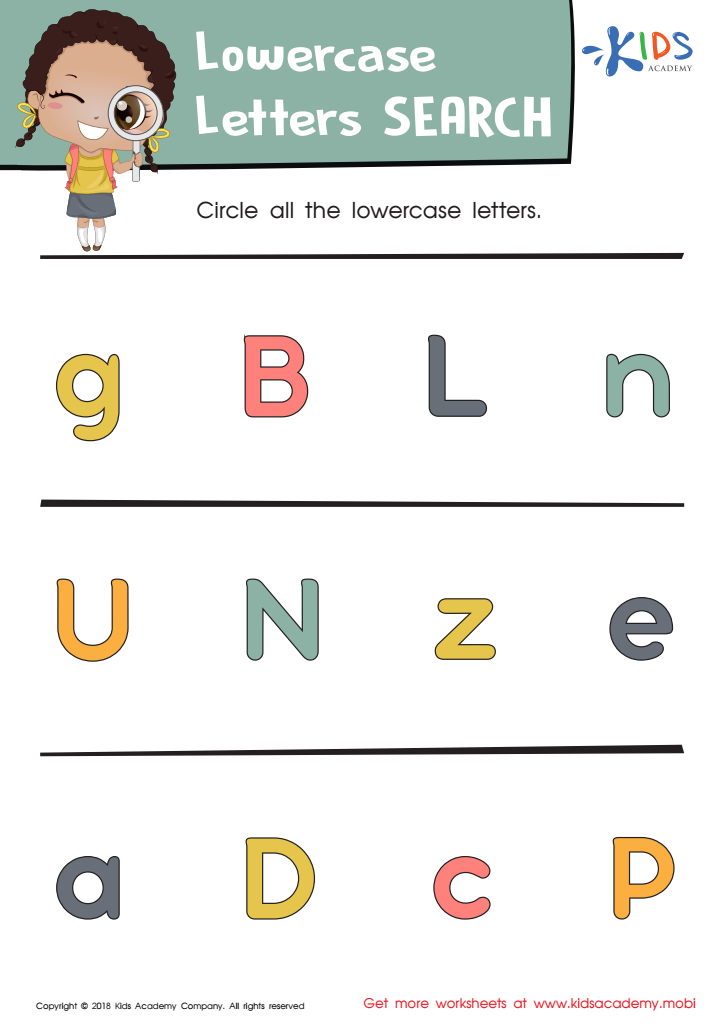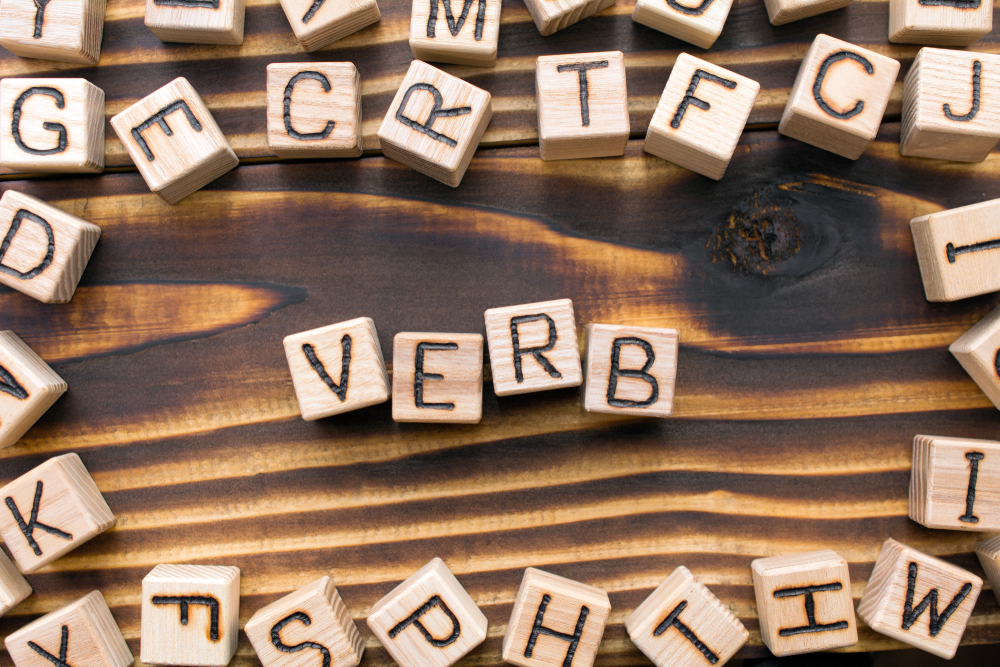Upper & Lowercase Letters worksheets activities for 6-Year-Olds
2 filtered results
-
From - To


Uppercase and Lowercase Letters: Assessment Worksheet


Lowercase Letters Search: Assessment Worksheet
Upper & Lowercase Letters worksheets activities stand as a cornerstone in the foundational stages of literacy education for young learners. Engaging in these activities not only acquaints children with the alphabet in both its uppercase and lowercase forms but also paves the way for a deeper understanding of the English language. Here’s why these worksheets are incredibly useful:
Firstly, Upper & Lowercase Letters worksheets activities foster letter recognition, an essential skill in the early learning process. Recognizing the difference between uppercase and lowercase letters is crucial for reading and writing development. These worksheets provide a structured approach, allowing children to explore each letter's unique shape and form in both its uppercase and lowercase manifestations, thus reinforcing their ability to distinguish and remember them.
Moreover, these activities enhance fine motor skills. As children trace, write, and color letters in various activities, they develop hand-eye coordination along with the muscle strength in their hands and fingers. This not only aids in letter recognition but also prepares them for the physical aspect of writing.
In addition, Upper & Lowercase Letters worksheets activities introduce children to the concept of case sensitivity in the English language, laying a foundation for proper grammar and punctuation. Understanding when to use uppercase letters at the beginning of sentences and for proper nouns becomes a natural outcome of consistent practice with these worksheets.
Furthermore, these worksheets are designed to be interactive and engaging, making learning enjoyable. Through a variety of activities such as matching games, puzzles, and coloring exercises, children remain motivated and entertained, which enhances their learning experience and retention.
In conclusion, Upper & Lowercase Letters worksheets activities are invaluable tools in early education. They not only support literacy development by promoting letter recognition and fine motor skills but also introduce essential language rules in an engaging manner. These activities are fundamental in setting a strong foundation for young learners, ensuring they are well-equipped for their future academic endeavors.
 Assign to the classroom
Assign to the classroom










